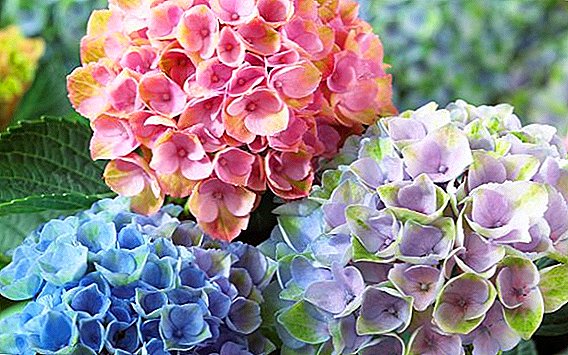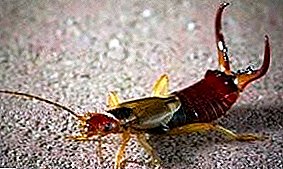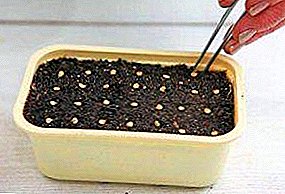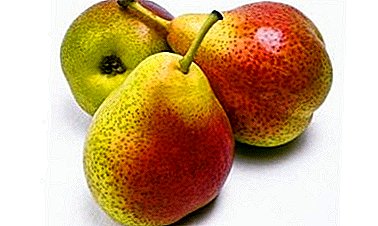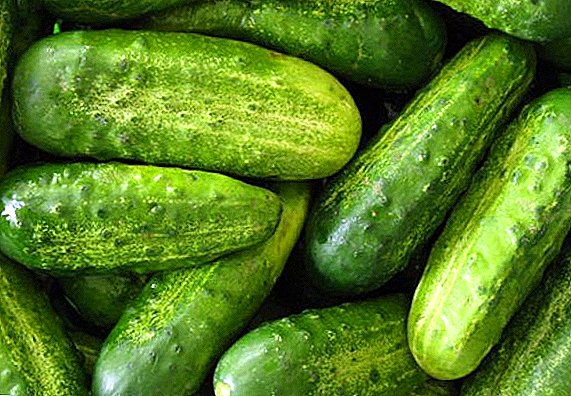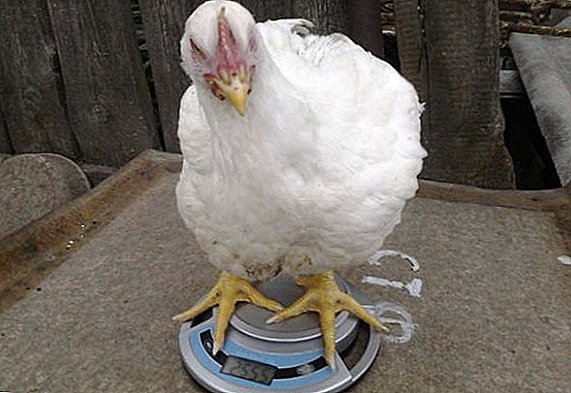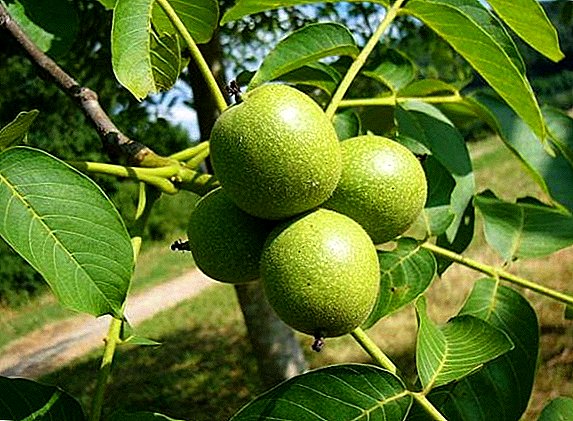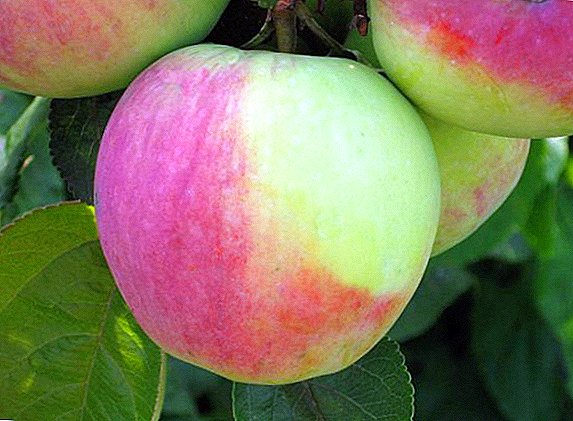 The late-winter apples of the "Northern Synapse" variety are not inferior in taste to the favorite varieties of the aristocracy of the Northern Hemisphere.
The late-winter apples of the "Northern Synapse" variety are not inferior in taste to the favorite varieties of the aristocracy of the Northern Hemisphere.
However, the emergence of this group was caused by the desire to improve the existing elite fruits, intended for nobles.
The variety has a high resistance to frost, which is of particular importance in regions where climatic conditions limit the growing season of plants. Let's try to figure out how to grow the Northern Synaph apple tree on our site, and analyze the main advantages and disadvantages of the tree.
Did you know? In one apple, the average size of 80 calories, despite the fact that the fourth part of the fruit consists of air. That is why these fruits do not sink in water.
History of apple varieties
The appearance of the "Northern Synapse" was due to the desire of breeders to create something like the famous elite apple variety "Crimean Synap", the fruits of which were brought specifically for the pre-revolutionary beau monde. There was a great taste of these apples, but the costly and long transportation caused resentment. Therefore, employees of the Michurin All-Union Research Institute of Horticulture volunteered to create something new and necessarily with the frost resistance gene. 
As a result of lengthy trials and experiments, a disciple and follower of Michurin, Sergei Isaev, produced the Northern Synapse grade. It was obtained by free pollination of apple seed, "Chinaka Kandil" and perfectly combined the highest taste qualities with endurance to the harsh weather conditions. The author dreamed of such a tandem.
Later the variety was zoned for other regions, taking into account the peculiarities of climate and soil. Therefore, these trees can be found nowadays both in household plots and in the gardens of processing enterprises in Russia. In addition, the genes of the "Northern Synapse" are fundamental in subsequent varieties - "Orlovsky Sinap", "Moscow Winter", "Moscow Later". The variety is recommended to breeders for use in the cultivation of early apple trees.
Description of the characteristics of the apple tree "Northern Synapse"
The basic qualities of the variety are early ripeness, endurance to frost and the ability to fully develop in a shortened growing season, as well as excellent taste characteristics of the fruit. Consider the features of the "Northern Synapse" in more detail.
Did you know? The fruits of the "Northern Synapse" are distinguished by a special beauty of appearance and taste, under the conditions of a steadily warm summer and autumn with sharp temperature changes at night and daytime. Given this nuance, experienced gardeners are in no hurry to remove apples from trees, since unripe fruits lose their taste and are poorly stored.
Tree description
Externally, apple trees differ strongly branched conical crown and tall trunk, reaching a height of 6-7 meters. On powerful skeletal branches, a multitude of thin, side-mounted shoots are formed. Bark gray-cherry color. The leaves are elongate, ovate, with a glossy surface and a pubescent inner side, dark gray-green color. Inflorescences on short legs, flowers are large, with scarlet petals. Fruits are tied on the growths of skeletal branches and lateral shoots.
The Northern Synaph apple trees are moderately resistant to dry weather, powdery mildew and scab, therefore they require appropriate care and preventive measures against diseases.
Fruit Description
Ripening apples of this variety begins in October. And full maturity comes only after 2-3 months, closer to the New Year. Fruits have a pleasant aroma, medium size, conical or stacanoid shape and a yellow-green color. One apple weighs approximately from 100 to 150 g. During storage, a rich red blush appears on the fruits. Under a thick smooth skin, covered with a waxy bloom, white specks are clearly visible. The flesh is fine-grained, juicy, snow-white in color, sometimes with a slight greenish tint. The fruit tastes sweet and sour, with a slight spicy aftertaste.
The peculiarity of the fruit lies in extreme keeping quality with absolute preservation of appearance and useful substances. Subject to the rules of storage and proper preparation of the cellar, apples of this variety can last until July. Excellent quality is the versatility of apples: they are suitable for both raw consumption, and for home canning and cooking desserts. Siberian gardeners especially appreciate the variety for the unique flavor that winter fruits confer on home-made wine.
Did you know? Doctors think that a dish without peel apples is a real blasphemy and reminds of fiber and antioxidants that are necessary for the body, two thirds of which consist of the skin of these fruits.
Pros and cons varieties
Although the breeders managed to turn all their dreams into reality when creating the variety Northern Synapse, it turned out to be not perfect either. Gardeners have found both positive and negative sides. In the responses, the trees of this breed are often called "kings of the garden" and explain this by such qualities:
- fruit maturity;
- excellent winter hardiness of apple trees;
- the ability to fruit on short rootstocks for the 2nd year;
- keeping quality of fruits for 7-8 months;
- the ability of adult apple trees of the Northern Synapa to high yields. Under the conditions of the right agrotechnology, up to 170 kg of apples can be harvested from a single tree.
In order for apples to reach full ripening, warm weather throughout the summer is imperative. In addition, if it is also rainy autumn with stable weather without sudden changes in temperature, there will be no blush on the fruit. With abundant fruiting, the taste qualities of apples are reduced.
Indignation causes and tallness of the trunk. With such a branched and tall giant, it is difficult to get winter apples, protecting them from blows and abrasions. Yes, and the tree creates a lot of shade in the yard or in the garden. It is also bad that the fruits ripen too late for harvesting, and for consumption they must lie down for another two months.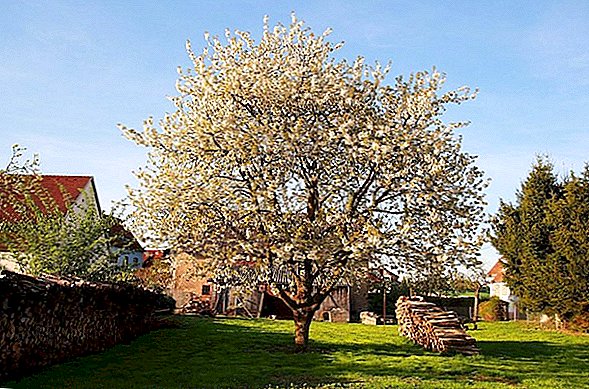
Important! When storing winter apples for storage is not recommended to remove them from a wax coating. It protects the fetus from moisture loss and penetration of bacteria and fungal spores.
Timing and selection of a site for planting an apple tree
The Northern Synaph apple variety will develop well when planting a seedling in a well-lit, spacious area, where nothing will block its access to the sun.
Particular comfort to the tree will provide loose, breathable light soils. Sugar and black soil with neutral acidity will do. When choosing a place, it is important to consider the location of groundwater. Ideally, they should be at a distance of 2-2.5 m, otherwise the roots will begin to rot from an excess of moisture, and the tree will die.
When you have decided on a place and acquired a high-quality planting material, which is of no small importance, you can start landing.
Some gardeners prefer spring rooting of saplings, because such trees have time to adapt, grow strong, and grow strong roots and branches for winter. In this case, it is recommended to land in the last weeks of April and early May. It is important that the earth is not cold, so, given the climatic features of a particular region, wait until the ground warms up sufficiently. The relative disadvantages of spring time is the need to constantly moisten the root system.  Other specialists for winter-hardy varieties prefer autumn planting, emphasizing the ability of such seedlings to strengthen roots, which is facilitated by damp autumn soil, and quickly get up to speed with the onset of heat. Such rooting is better to plan for a few weeks before the start of frost. Optimal terms are considered the beginning of October.
Other specialists for winter-hardy varieties prefer autumn planting, emphasizing the ability of such seedlings to strengthen roots, which is facilitated by damp autumn soil, and quickly get up to speed with the onset of heat. Such rooting is better to plan for a few weeks before the start of frost. Optimal terms are considered the beginning of October.
According to agronomists, young trees that are no more than 2 years old should be planted in the spring, and all other specimens, except the old ones, should be planted in the autumn. In case of the need to transplant 10-year-old apple trees, it is better to plan the planting for the winter time in order to injure the plant as little as possible.
Important! In no case can not be used for mulching pristvolnyh circles of apple lumber coniferous trees. They oxidize soil in the process of decomposition, which is extremely undesirable for fruit crops.
Preparatory work before landing
To prepare for planting Apple should be a month. During this period, it is important to determine the site where this variety will grow, and prepare a pit 70 cm deep and about 1 m wide. It is desirable to fold the first shovels with the substrate separately from the rest of the barren soil removed from the lower layers.
In windy areas, it is recommended to install a peg in the middle of the groove for further attachment to it of the branches of a young tree. The base of the wood is better to burn, to prevent the appearance of rot during decomposition of the material. Then the upper ground is mixed with equal parts of humus, peat, sand and compost. The bottom of the pit is drained, then it is filled to the top with the prepared mixture. This is done to ensure that as a result of the subsequent sedimentation of the soil, the apple tree does not turn out to be in the middle of a deep funnel, where the collected water will destroy the roots. In conclusion, the pit is covered with plastic wrap and secure its edges. During 3-4 weeks a microclimate favorable for the root system of apple trees is formed there.
This is done to ensure that as a result of the subsequent sedimentation of the soil, the apple tree does not turn out to be in the middle of a deep funnel, where the collected water will destroy the roots. In conclusion, the pit is covered with plastic wrap and secure its edges. During 3-4 weeks a microclimate favorable for the root system of apple trees is formed there.
Do not forget a day before planting dip the roots of a seedling in a container of water. The tree should be well saturated with moisture.
Important! The distance between the trunks of the Northern Synapse and the neighboring plants in the garden should be 7 m.
Rules for planting apple seedlings
Correct planting apple seedlings Any variety is such important for the tree stages: 
- Inspection of seedlings for rot, dried up areas and mechanical damage to the root system, as well as the presence of dry shoots. In cases of suspicious brown edges on the rhizome, they must be cut to live wood.
- Treating the roots of clay mash.
- Planting in a prepared pit with a careful straightening of the root system (the said peg should be located on the south side of the trunk, to prevent sunburn).
- Watering seedlings (if planting is carried out in the spring, water should be poured until the earth ceases to absorb moisture).
- Dusting the roots with the substrate from the top layer of the earth and carefully sticking it (the trunk should be shaken intensively several times so that the voids formed underground and the roots do not dry out).
- Inspection of the root collar. It should rise 4-5 cm above the ground. Deepening this place is fraught with a meager harvest of small sizes, excessive elevation is dangerous dehydration and death of the plant. It is better to pour a small mound of soil on the transition of the root to the trunk so that the water flows during irrigation and precipitation.
- Mulching pristvolnogo circle. It is important to retreat from the tree 15 cm, to reduce the risk of infection by pathogenic microbes formed during the decomposition of mulch.
- Garter branches to the installed peg (it is better to use a cloth tape for this).
Did you know? The oldest apple tree, planted back in 1647 by Peter Stewensant, still grows in Manhattan and, oddly enough, produces fruit.
Rules for seasonal care of an apple tree
Poor care for the representatives of this winter-hardy variety will affect the development of the plant and its yield. Therefore, in this case, it is of particular importance to timely watering, feeding, loosening the soil, mulching pristvolnyh circles and prevention of diseases, rodents and pests. We will understand in order, where to start gratification apple trees "Northern Synapse."
Pollination of the apple tree
This aspect should be bothered while planting a tree, picking up the right neighbors for it. The fact is that the variety is only partially self-fertile. This means that other pollinators are needed to increase yields by about 40%. According to botanists who calculate the ratio of phlorizin in the bases of the columns of pollinated trees and pollen pollinators, a good percentage of the ovary formation in cases of neighborhood with apple varieties: Slavyanka, Pomon-Chinese, Antonovka ordinary, Pepin saffron.
Scientists believe that summer varieties are not effective next to winter ones, therefore, they recommend grouping trees in the garden according to this feature. 
Pest and disease treatment
To prevent fungi and bacteria from attacking your apple trees, take care of the spring cleaning of the plants by removing all damaged and dead areas in the spring. In the autumn, do not forget to rake the soil, freeing from fallen leaves, where harmful insects overwinter and pathogens multiply.
In the spring before bud break, foliar disinfection of fruit trees with copper sulphate or "Skor" is obligatory. After flowering, the crown is treated with copper oxychloride. And when the fruits are removed from the tree, you need to spray the branches and the trunk with copper sulphate, or with a liquid solution of soap. But the best prevention is competent care.
At the first detection of signs of scab, powdery mildew or cytosporosis, treatment is carried out urgently with the use of the preparations "Khom", "Topaz", "Colloidal sulfur", "Strobe".
Important! From hungry rodents that attack the trunks of fruit crops in the winter, will save a half-meter-long sheet of roofing leaf, which is wrapped around a tree near the ground. Alternatively, a dense weave mesh, coniferous branches, and even burlap.
How to conduct watering
Apple trees, regardless of the variety, need 3-5 waterings for the entire season of development and fruiting. Weather conditions can adjust this amount, adding to the garden owners more hassle and age of trees. For the first time all the plants need to be watered before buds begin to blossom. If it is too hot outside, then young saplings up to 5 years of age should be additionally fed with moisture every week, observing the norms of water consumption (we will dwell on them below).
The rest of the fruit crops in the garden will be organized a second watering after they have faded and the ovary begins to form. Hot weather forces additional watering during the growth of greenfinches, otherwise they may stop growing and crumble. Last moistening is done 3 weeks before the fruits are removed. The stable heat in October again makes it necessary to water trees additionally in order to imbue moisture and protect it from freezing in winter.
The amount of water needed for each tree is calculated based on the age of the culture. So, for young seedlings up to 1 year, the recommended rate is 20-30 liters of liquid per 1 square meter. Every year, apple trees should be added to a bucket of water until they reach 6 years. Older specimens need about 6-10 buckets of water per square meter of the wheel circle.
Important! Watering apple trees during the harvest and immediately after it is fraught with the growth of new shoots that will be destroyed by frost. As a result of such an injury, the tree will die.
Fertilization
Top dressing of apple trees "Northern synapse" is determined by their vegetative periods. The plant feels an acute shortage of useful substances in the spring during an intensive build-up of shoots. It is compensated by nitrogen-containing fertilizers or a solution of nitroammofoski and ammonium nitrate. For the active development of the crown, you can water the tree with chicken manure (3 times before the formation of fruits).
The next fertilizer is carried out when the fruiting period begins, that is, the ovary is formed on the tree. You can make mineral complex substances or a mixture of 1 bucket of compost, 50 g of potassium chloride, 140 g of superphosphate, 30 g of nitroammofoski.
At the end of the summer, apple trees are fed with humus or purchased fertilizers labeled "autumn" to prepare for wintering. And also feed the frost-resistant properties of the "Northern Synapse", processing the crown with superphosphate (30 g: 1 l of water).
To neutralize the oxidized substrate after 3-4 years, liming is carried out at the rate of 150 g of dolomite flour per 1 square meter of the garden.
Cropping and crown formation
Each pruning of apple trees involves cleaning the plants from areas affected by the disease or pests, frostbitten and old branches. This is done for a better turnover, which prevents plant diseases.
Considering the peculiarity of the "Northern Synapse" branches to develop without thickening the crown, there is no need for its formation. Every spring should be sanitary trim, after disinfecting shears. Be sure to close up sections on large areas with a garden pitch. In the fall, remove weak growths, so that the tree can safely survive the winter.
Did you know? The first pruning of apple trees is carried out immediately after planting the seedlings, removing the upper parts from the trunk and skeletal branches at a level of 80 cm from the ground.On the one-year tree of the “Northern Synapse”, the increments are removed by 40–20 cm. The following year, the branches are shortened so that the crown is formed from sprouts of three tiers. In this case, of course, leave strong shoots.
Wintering apple trees
The increased resistance of the variety "Northern Synapse" was the reason why gardeners among themselves call the tree "armor-piercing". The winter-hardiness genes grafted by breeders allow the tree to tolerate even 40-degree frosts comfortably. Therefore, the breed is popular with residents of the Central Black Earth region of the Russian Federation.
Protect from harsh winters should be only young plants that have not yet become stronger, which have not reached the fifth anniversary. For this purpose, a 20-cm layer of mulch pristvolny circles.
Harvesting and storage
It is time for harvesting from the Northern Synaph apple trees in October. The fruits, since they have not yet reached full-fledged ripeness, are not showered from the branches. In dry weather, they should be carefully removed with special equipment that can be easily built at home with a long stick and a piece of a plastic bottle. Apple picking starts from the lower branches, gradually rising to the top. You can not shake the barrel, allowing the stress of the fruit.
Did you know? If you plant a hundred apples from the seed of one tree, they will grow completely different.
In the vault bring only whole fruit, without scratches, bumps and dents. To prevent the apples from spoiling, each should be wrapped in clean paper and carefully laid in one layer, rather than in bulk, in wooden or cardboard boxes.
At the forums, the hostesses share their experience in treating the fruit with a weak manganese solution. But experts on this matter have their own opinion: with such disinfection, apples should be wiped dry from moisture, and the protective wax deposits will be destroyed. Therefore, this method is ideal for autumn fruits.
Watch that in the cellar the temperature fluctuated within 1-3 degrees of heat, and the humidity of the air did not exceed 90%. In cases where this figure is below 85%, you need to soak the wrap with vegetable oil. Provide high-quality ventilation in the room and warm the walls so that fruits and vegetables do not suffer from extreme temperature jumps in winter.
Other storage methods offer to fall asleep apples wet river sand or sawdust. You can save them in tied plastic bags.


